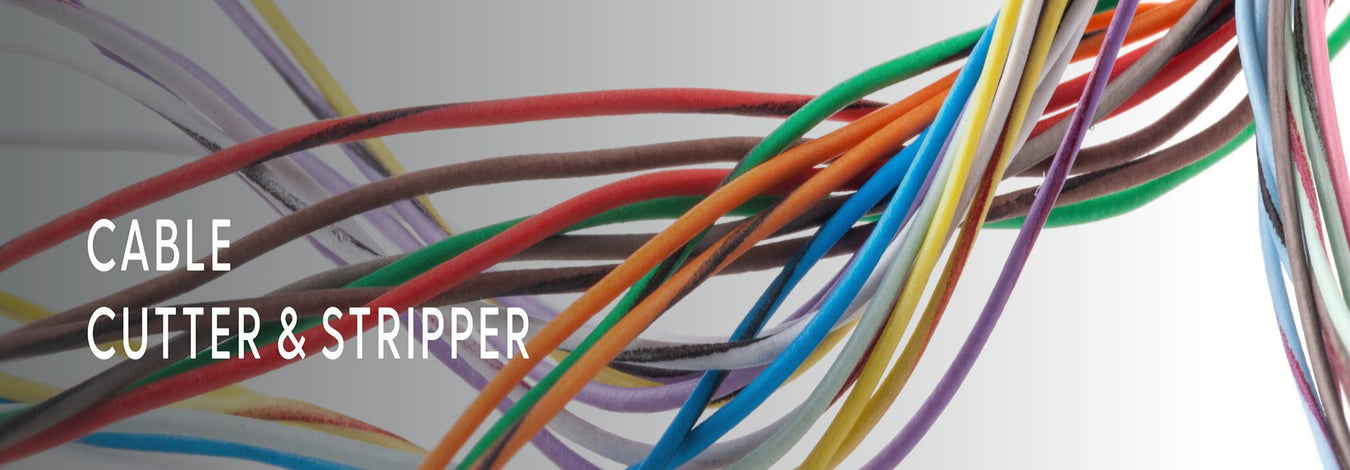
How Do I Know Which Crimping Tool To Use?
Over the years, crimping has been embraced as a better way of making electrical joints than soldering, among other methods. Most professionals recommend using a crimping tool for this process. However, there are a variety of options in today’s market, and choosing the right one can be daunting, especially for new professionals or DIY enthusiasts. In addition, there are other factors that one can hardly ignore when deciding what crimping tool to use for their projects.
This post briefly looks into different types of crimping tools and how to choose the right tool for your specific application.
Read more: Can I Use Pliers to Crimp?
Types/ Categories of Crimping Tools
There are different types of crimping tools, and each one is unique. These tools are often categorized based on designs or operational mechanisms. They include:
1. Handheld crimping tools
These types of crimping tools feature a similar design to the traditional pliers and are manually operated using a hand. They are quite portable and lightweight. In addition, most modern handheld crimp tools feature a ratcheting mechanism that makes the crimping process easy and efficient. Lastly, a single die is designed with crimp cavities to accommodate terminals of different sizes; some tools may come with interchangeable dies. An example of this kind of tool is the SN-2549 Terminal Crimping Tool With Replaceable SN Series Jaws.
2. Benchtop crimping tools
This type of crimping tool is clamped on a workbench. Depending on the model, it can be manually or electrically operated. These tools are often used to complete more demanding crimping tasks. An ideal example of such a tool is the iCrimp IWS-0801DTS Hex Crimp Bench Mount Cable Crimper.
3. Hydraulic crimping tools
These tools use hydraulic fluid to apply pressure on the crimping dies and tend to deliver enough power for demanding applications. The best part is that they require little effort and are efficient. The iCrimp YQK-300 Hydraulic Crimping Tool is a good example of a versatile hydraulic crimper in today’s market.
4. Pneumatic crimping tools
This tool is also best for heavy-duty crimping applications and uses compressed air to crimp terminals. As a result, they’re pretty ideal for high-volume production. Some models can be mounted on workbenches, while others are manually operated. Lastly, you can easily achieve consistency with a pneumatic crimper. A good example is the iCrimp AM 6-4 Pneumatic Crimper.
5. Electric crimping tools
Batteries power these types of crimpers and can consistently create a large volume of crimp connections within a short period. Most of these tools are handheld, lightweight, and portable.
Factors to Consider When Choosing a Crimping Tool
1. Application/ Type of Terminal
Application is one of the significant aspects you must consider when choosing a crimping tool. It also influences the type of terminal/connectors you’ll use with your tool. For instance, a benchtop crimper is a better option if you’re working on a more demanding project in terms of speed and high volume of crimp connections. On the other hand, if you’re making a few crimp connections for a simple DIY project, a ratchet crimping tool is the ideal choice.
2. Crimp profile
Different applications require different types of crimping profiles and crimping tools. For example, a crimp profile for a battery cable lug terminal differs from that of DT connectors; therefore, you’ll need crimping tools for each of them, or a crimping tool can accommodate die sets with different crimp cavities.
3. Wire gauge
Usually, a crimping tool is designed to accommodate a certain wire gauge; therefore, choosing a crimping tool that matches the wire size you’re working with is important. Choosing the wrong tool can result in poor-quality crimp connections (too loose or damaged).
4. Manufacturer specification
It’s always a good idea to refer to the manufacturer’s specifications when working on a project since some manufacturers may recommend using a specific crimping tool or brand to make crimp connections. Suppose you use different tools; you may end up with a void warranty.
Final Thought
As highlighted above, various crimping tools are on the market. Choosing the proper crimper is essential if you want to make quality electrical crimp connections. Factors such as the type of terminal, wire gauge, and crimp profile are crucial when choosing a crimping tool. Are you looking for quality and affordable crimping tools? iCrimp is the best place for professionals and DIY enthusiasts to purchase a variety of crimping tools for their projects. Our tools range from handheld ratchet crimpers and benchtop crimping tools to pneumatic crimpers.
Reference





